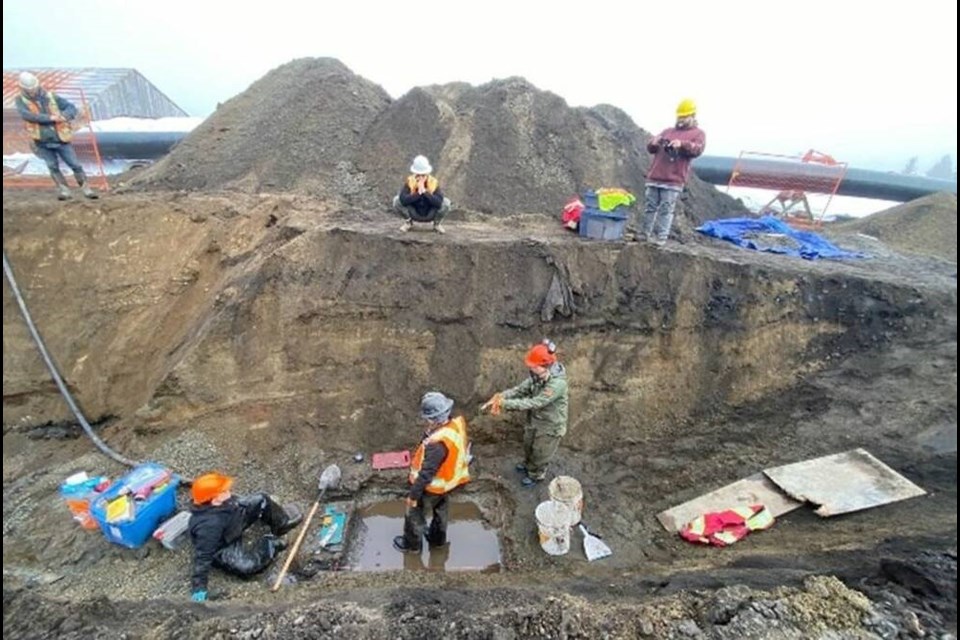A sewer-line construction project near Courtenay has unearthed some well-preserved wooden tools and small lengths of rope believed to be 3,800 years old.
The wooden wedges traditionally used to split logs into planks for house construction and small lengths of cordage used in many facets of daily life were found last month off Farmview Road between Courtenay and Comox.
The Comox Valley Regional District is working with K’ómoks First Nation to document and recover archaeological materials during the sewer project, which involves replacing aging pipes that run through many of the nation’s ancestral settlements and villages.
The K’omoks First Nation said organic materials such as wood, plant fibres, basketry and fishing nets typically only survive in waterlogged archaeological sites, where a lack of oxygen means microbes and bacteria can’t break them down.
“Wet sites are rare and extremely valuable because they give us a more complete picture of how people lived in the past,” said a statement from the First Nation.
The K’ómoks team said wooden wedges were typically made from fine-grained woods such as yew, spruce, maple and crabapple, which were then scorched to increase their hardness.
The wedges also had a cordage collar, or grommet, which helped to prevent the edge of the wood from fraying when hammered.
The team also found traditional rope made from plant and wood fibres, which was likely used in daily life for activities such as making clothing and basketry, hunting, harvesting, carpentry and fishing.
The Royal B.C. Museum has been providing K’ómoks with specialized support in the “wet site” areas.
The First Nation said the findings underscore the importance of archaeological analysis in construction projects.
“Without archaeological monitoring, excavation and analysis, these fragile materials that teach us about deep-time history can be destroyed, and information can be permanently erased.”
The First Nation said the materials were found about 30 metres outside the registered provincial archaeological site boundaries, in an area that does not require provincial archaeological permits.
However, a K’ómoks Cultural Heritage Investigation Permit system protects cultural materials that are directly adjacent to registered site boundaries, the First Nation said.
“This shows that the [permit] system is working to recover cultural information that would otherwise be destroyed by development without documentation.”




